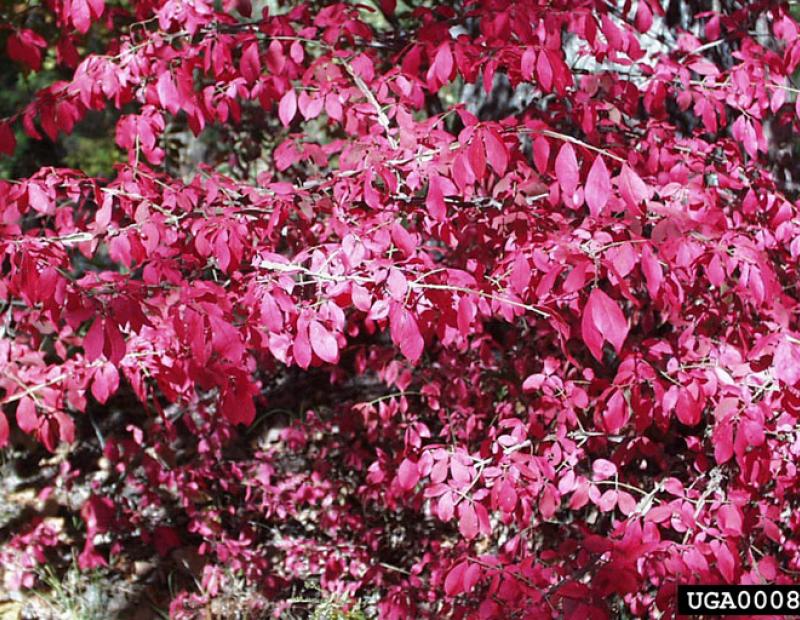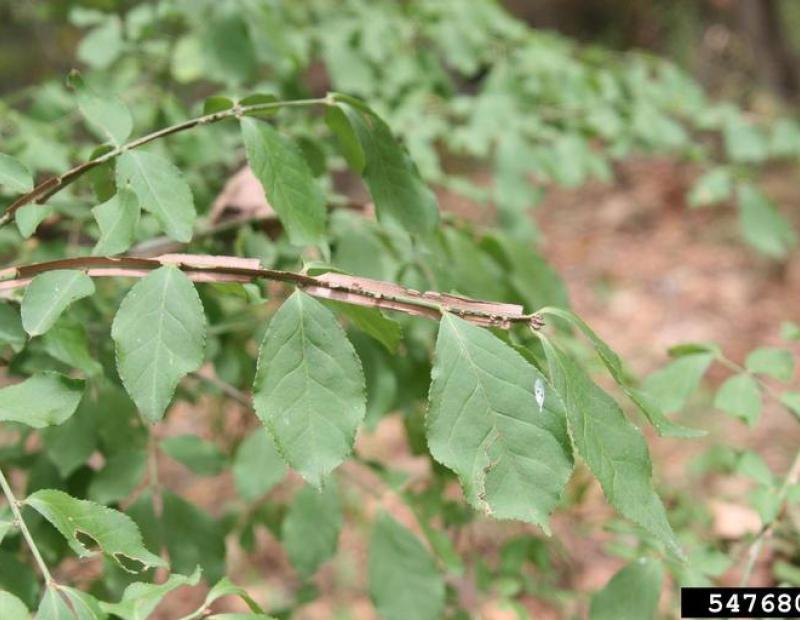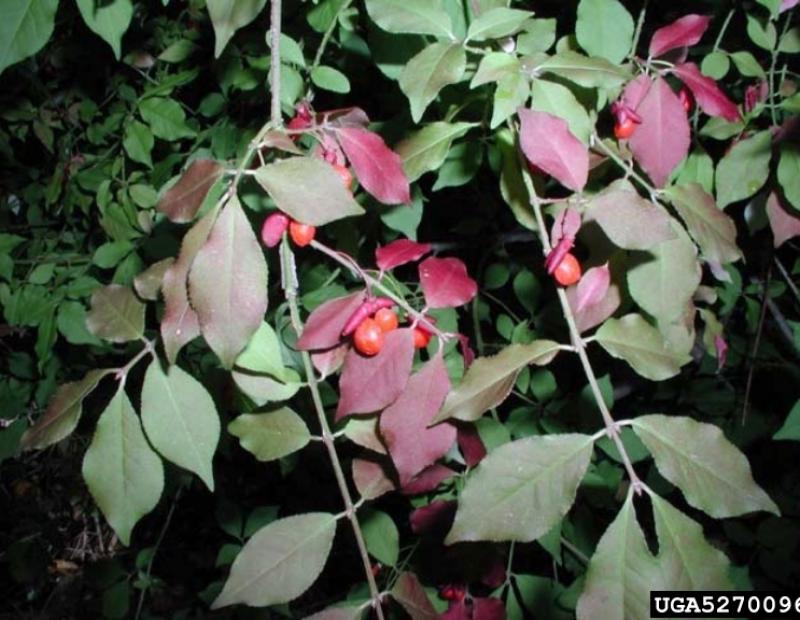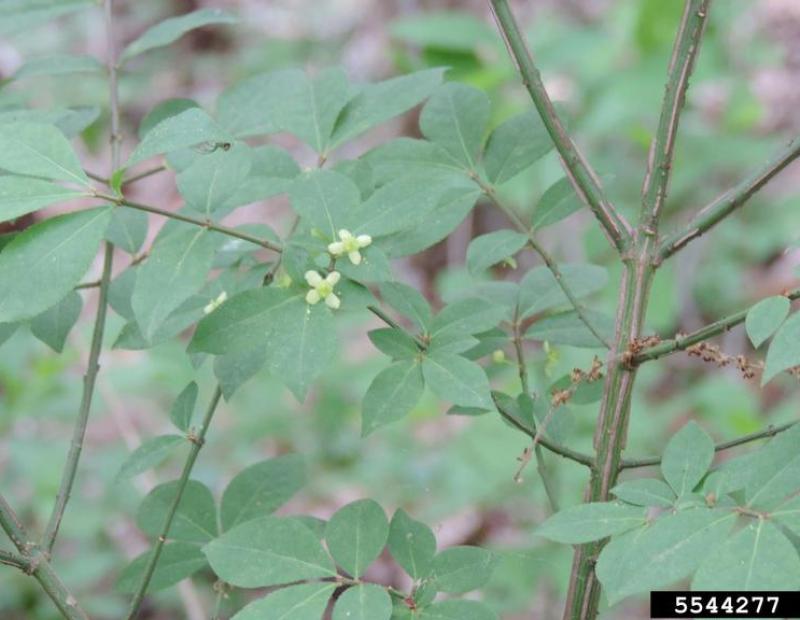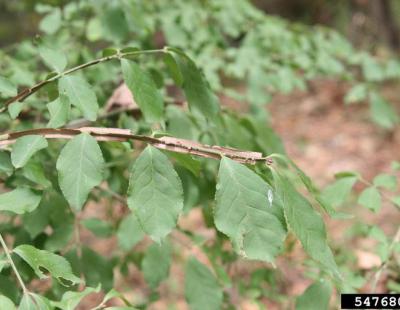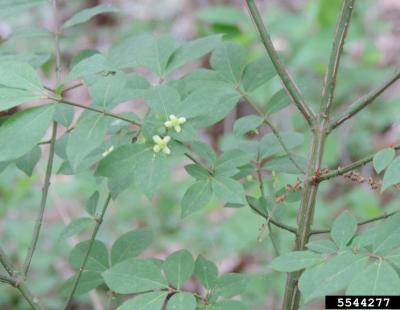- Terrestrial Plants
- Shrub or woody bush
Burning Bush poses a threat to ecosystems by growing in dense thickets and crowding out native species. Birds feed on the red fruits every fall and consequently distribute the seeds, thus facilitating the shrub's colonization.
Burning bush was originally introduced to the United States around 1860 as an ornamental shrub so it may found in landscaped settings, along roadsides, and in open fields and forests. Burning Bush is widespread in the Lower Hudson Valley and it is listed as regulated in New York.
Named for its bright red fall foliage, Burning Bush also features broad, corky wings located along its green-brown branches. The leaves are deciduous, opposite, and dark green in color before they turn a scarlet red color in the fall. Burning bush grows to 6.5 meters in height. The shrub bears inconspicuous green flowers that appear from late April to June and red fruits appear between September and October.

